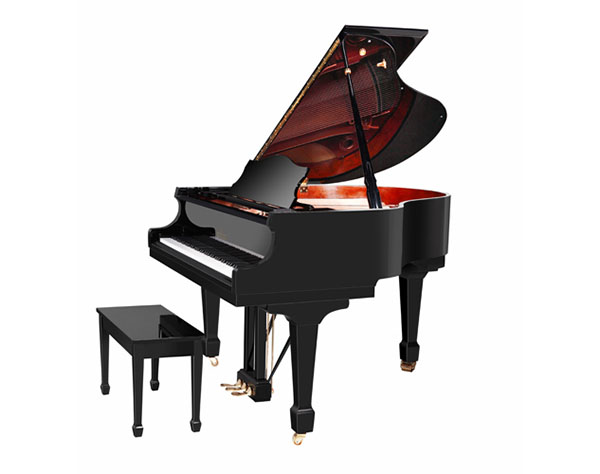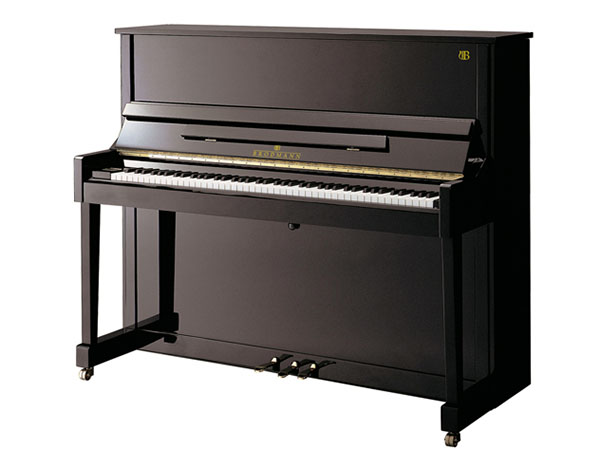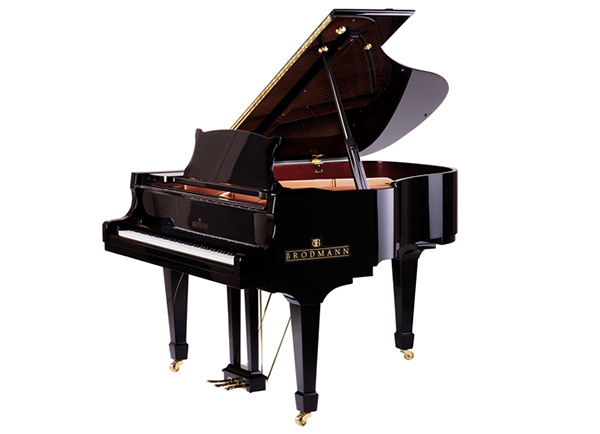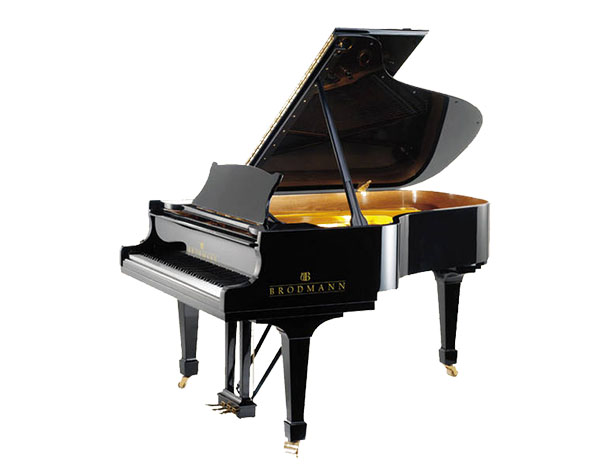Brodmann

Upright Piano Model CE 118
Bench included. 88 keys w: 150 cm / 59” h: 118 cm / 46” d: 60 cm / 23” net: 210 kg / 463 lb

Grand Piano Model CE 148
This piano features the Brodmann Viennese-designed scale and action with a solid-spruce core, veneer, and ribs. Hammers are FFW German felt with green underfelt. Fallboard: Slow close system Bench included. Frame: Vacuum cast plate Brodmann original copper. Strings: Rosslau wire. Bench included. Available in Ebony polish, Bubinga, Walnut, and Mahogany. Length: 4’11, Width: 5’0, Weight: 728 lbs.

Grand Piano Model CE 175
This piano features the Brodmann Viennese designed scale and action, as well as a solid spruce core and spruce veneer surfaces. Hammers are FFW German felt with green underfelt. Slow close fallboard system and bench included. Frame: Vacuum cast plate Brodmann original copper. Strings: Rosslau wire. Available in ebony polish, bubinga, walnut, and mahogany. Bench included. Length: 5’9, Width: 5’0, Weight: 849 lbs.

Upright Piano Model PE 121
Mid-size, traditional style upright piano, finished in ebony polish with 7Ľ octave compass (88 keys), 3 pedals and castors, with German scaling and design. 47 inches high. Available in Ebony Polish and White Polish. Width: 59″, Hidth: 47″, Weight: 475lbs.

Grand Piano Model PE 150
Baby grand piano finished in ebony polish with 7Ľ octave (88 keys), 3 pedals, and German scaling and design. This piano was designed with the optimum sound quality in mind for its size, for musicians with limited space but unlimited desire for high quality sound. Slow close fallboard system. Available in Ebony Polish. Length: 4’11, Width, 4’11, Weight: 595lbs.

Grand Piano Model PE 162
This best-selling, medium sized grand piano with unsurpassed volume of sound and dynamic range will help you achieve your musical dreams. Slow close fallboard brake system including German Strunz soundboard and ribs, Abel hammers and Dehonit pinblock. Finished in ebony polish with 7Ľ octave (88 keys), 3 pedals, and German scaling and design. Length: 5’4, Width: 4’11, Weight: 639 lbs.

Grand Piano Model PE 187
This professional grand piano is finished in ebony polish and features 7Ľ octaves (88 keys), 3 pedals, and German scaling and design. This piano is an ideal size for both private and professional teaching at music conservatories and schools. Slow close fallboard brake system including German Strunz soundboard and ribs, Abel hammers and Dehonit pinblock.
The Model BG 187 grand piano is the size of piano which is bought more often than any other size of piano made in the world today. Length: 6’2, Width: 5’1, Weight: 705lbs.

Grand Piano Model PE 212
This high end piano is designed for smaller venues and institutions. Its full sound and responsive tonal range make it a wonderful piano for use in private homes. This piano is finished in ebony polish with 7Ľ octave (88 keys). Slow close fallboard brake system including German Strunz soundboard and ribs, Abel hammers and Dehonit pinblock.
It features 3 pedals with German scaling and design and a slow close fallboard system.
Length: 7′, Width: 5’3, Weight: 899 lbs.

Grand Piano Model PE 228
This piano is designed for professional performances in small-medium concert halls. Features professional tonal color, responsiveness, and a wide, dynamic sound range. Finish is ebony polish with 88 keys, 3 pedal German scaling system, and slow close fallboard design. Slow close fallboard brake system including German Strunz soundboard and ribs, Abel hammers and Dehonit pinblock. Available in Ebony Polish.
Length: 7’5, Width: 5’3, Weight: 923lbs.
Joseph Brodman piano constructor story
Joseph Brodmann, born in 1763 in Deuna/Eichsfeld (today Germany, Thüringen), was one of the first and best known piano designers and craftsman of his time. As a young man he came to Vienna and became the apprentice of the well known piano builder Frederick Hoffman. Vienna had already been established as the centre of the musical world influenced by the music of Mozart, Beethoven and Schubert.
In 1800, in the Lexicon of Musicians he was listed as “Joseph Brodmann – instrument maker, excelled in constructing horizontal fortepianos of solid finish“. In 1805 he was registered in the Court and State record department as an Organ and Piano maker.
Brodmann’s innovations in cabinet design made his instruments sought after not only by musicians, but also Vienna’s high society at the time. Examples of Brodmann pianos are still in working order in the piano collections of the Vienna Arts and Berlin Museums today.
Joseph Brodmann’s original address in Vienna was at no 43 Glacis, Josefstadt (8th District), later 226 Johannes Street, which is called today Lenau Street 10, where he also had his workshops. Ignaz Bösendorfer studied in the workshop of Joseph Brodmann from the age of 19 years, where he finished his apprenticeship. From 1828 he took over Joseph Brodmann’s work-shops, and began to produce the world famous Bösendorfer Pianos
Now completely independent of Bosendorfer, Brodmann’s world headquarters is still located in Vienna, Austria, not far from the original factory and only five minutes away from the famous opera house and the historic old town. The city, with its musical history as well as the heritage of Joseph Brodmann and his pupil Ignaz Bösendorfer, continue to influence the way Brodmann pianos are built to this day. Under the leadership of Christian Höferl, a former long time Director of Bösendorfer and Colin Taylor, a former Bösendorfer concert technician and manager, along with Bosendorfer’s former foreman of voicing and regulating along with the former head of quality control for Bosendorfer, the Brodmann company is comprised of a highly experience team whose aims are to produce the highest quality pianos at unbeatable prices.
